[Apollo 4] The historic liftoff of the first Saturn V rocket from Pad 39A at the Kennedy Space Center. NASA, 9 November 1967. Printed 1967. Vintage chromogenic print on fiber-based Kodak paper [NASA image 107-KSC-67PC-440]. 25.4×20.3 cm (10×8 in), with NASA caption numbered “107-KSC-67PC-440” and “A Kodak Paper” watermarks on the verso (NASA Marshall Space Flight Center, Huntsville, Alabama). Apollo 4 was the first of the “big shots,” the test launch of the colossal three-stage Saturn V space vehicle designed by the team of Wernher von Braun at the Marshall Space Flight Center that would take men to the Moon, and a critical success for NASA. The mission was the first to lift off from Launch Complex 39, specially constructed for the giant 363-foot Moon rocket, and represented a major milestone in NASA’s efforts to land humans on the Moon. “The [Saturn V] rocket will free man from his remaining chains, the chains of gravity which still tie him to this planet. It will open to him the gates of heaven.” Wernher von Braun. The Apollo 4 flight plan called for the Saturn V to place the Apollo spacecraft and the launch vehicle third (S-IVS) stage into a 117 statute mile circular orbit. After completing to orbits, the third stage would re-ignite to place the Apollo spacecraft into orbit and the service module propulsion system would be fired to raise the spacecraft's apogee to 11,400 miles. A second service propulsion engine firing during descent from apogee would boost the velocity to about 25,000 miles per hour. Protected by its heat shield, the command module would reenter the atmosphere, land and be recovered in the Pacific Ocean about 622 miles northwest of Hawaii. On the morning of November 9, 1967, the ambitious effort to develop the Saturn V was achieved. At 7:00 a.m. EST, NASA’s Kennedy Space Center experienced the roar of a rocket. The rocket’s power of 7.5 million pounds of thrust reached the Launch Control Center (LCC), Press Site and spectators, all three miles away, shocking even veteran launch viewers and creating one of the loudest-ever human-made sounds. “Go, baby, go,” Wernher von Braun, the chief architect of the Saturn V rocket, was heard to shout. (Poole, p. 85). Condition Glossy print in excellent condition. Preview In Lyngby Auction Space, 15 November 2023 Category Photos ▸ Vintage photographs Selling 15 November at 6:19 pm Estimate 6,000–8,000 DKK
Condition
[Apollo 4] The historic liftoff of the first Saturn V rocket from Pad 39A at the Kennedy Space Center. NASA, 9 November 1967. Printed 1967. Vintage chromogenic print on fiber-based Kodak paper [NASA image 107-KSC-67PC-440]. 25.4×20.3 cm (10×8 in), with NASA caption numbered “107-KSC-67PC-440” and “A Kodak Paper” watermarks on the verso (NASA Marshall Space Flight Center, Huntsville, Alabama). Apollo 4 was the first of the “big shots,” the test launch of the colossal three-stage Saturn V space vehicle designed by the team of Wernher von Braun at the Marshall Space Flight Center that would take men to the Moon, and a critical success for NASA. The mission was the first to lift off from Launch Complex 39, specially constructed for the giant 363-foot Moon rocket, and represented a major milestone in NASA’s efforts to land humans on the Moon. “The [Saturn V] rocket will free man from his remaining chains, the chains of gravity which still tie him to this planet. It will open to him the gates of heaven.” Wernher von Braun. The Apollo 4 flight plan called for the Saturn V to place the Apollo spacecraft and the launch vehicle third (S-IVS) stage into a 117 statute mile circular orbit. After completing to orbits, the third stage would re-ignite to place the Apollo spacecraft into orbit and the service module propulsion system would be fired to raise the spacecraft's apogee to 11,400 miles. A second service propulsion engine firing during descent from apogee would boost the velocity to about 25,000 miles per hour. Protected by its heat shield, the command module would reenter the atmosphere, land and be recovered in the Pacific Ocean about 622 miles northwest of Hawaii. On the morning of November 9, 1967, the ambitious effort to develop the Saturn V was achieved. At 7:00 a.m. EST, NASA’s Kennedy Space Center experienced the roar of a rocket. The rocket’s power of 7.5 million pounds of thrust reached the Launch Control Center (LCC), Press Site and spectators, all three miles away, shocking even veteran launch viewers and creating one of the loudest-ever human-made sounds. “Go, baby, go,” Wernher von Braun, the chief architect of the Saturn V rocket, was heard to shout. (Poole, p. 85). Condition Glossy print in excellent condition. Preview In Lyngby Auction Space, 15 November 2023 Category Photos ▸ Vintage photographs Selling 15 November at 6:19 pm Estimate 6,000–8,000 DKK
Condition
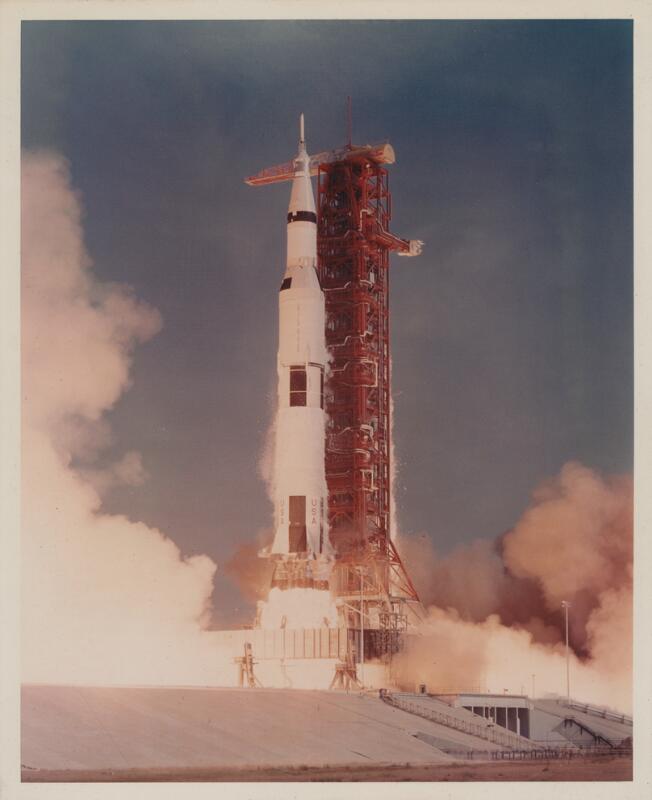
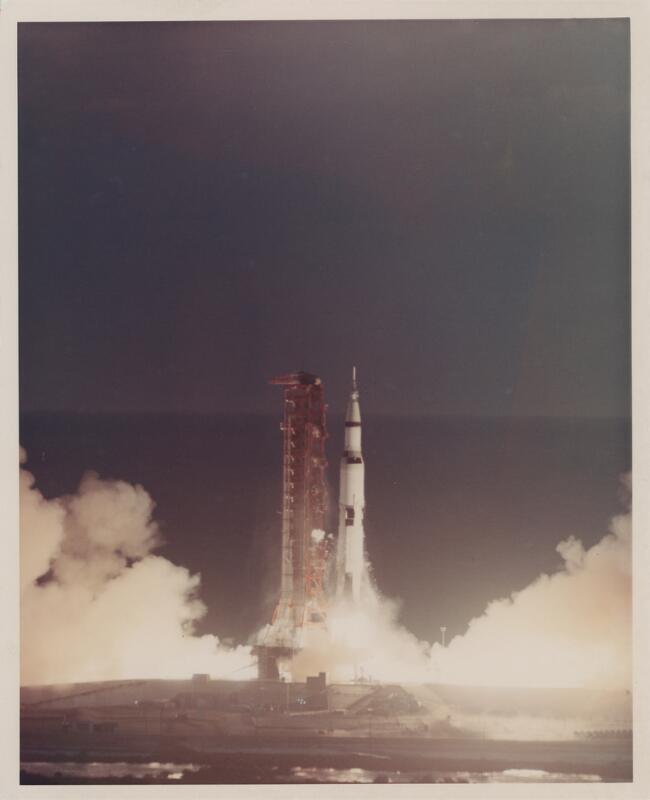

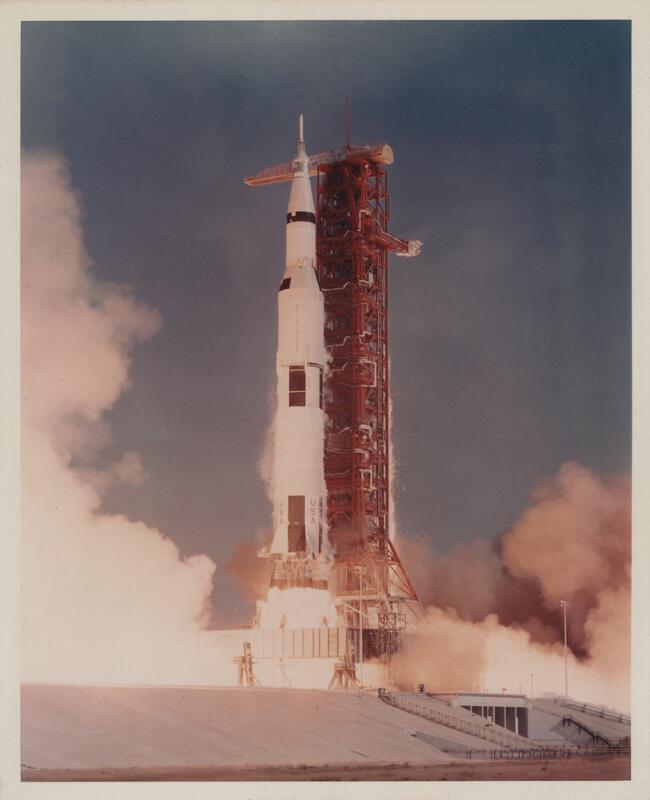

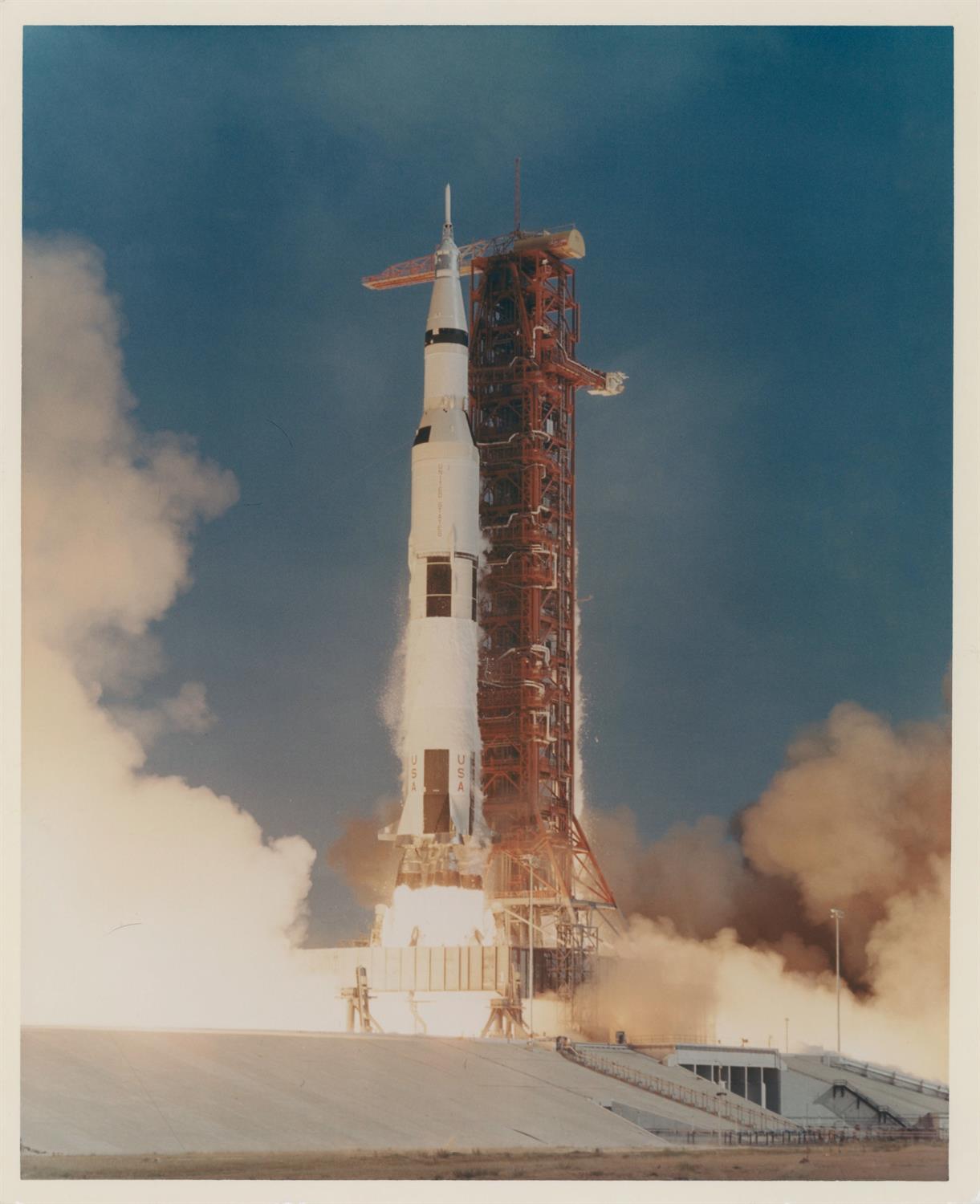
.jpg)
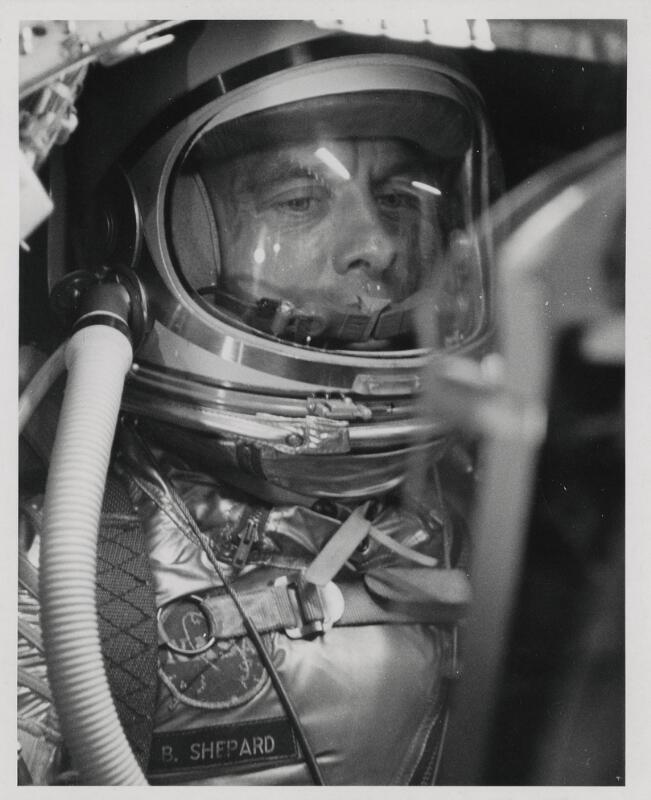
Testen Sie LotSearch und seine Premium-Features 7 Tage - ohne Kosten!
Lassen Sie sich automatisch über neue Objekte in kommenden Auktionen benachrichtigen.
Suchauftrag anlegen